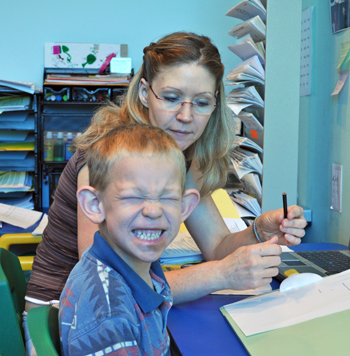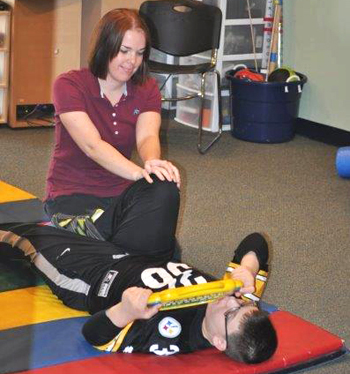
|
Pediatric Occupational, Physical, ABA/Behavioral, Feeding, Speech, and Language Therapies Main Clinic: 931-372-2567 1445 East 10th Street Cookeville, TN 38501 Email: TherapyDirector@DevelopmentalDelay.net HIPAA Secure Email: FrontDesk@DevelopmentalDelay.net Fax: (931) 372-2572 ABA Clinic: 931-201-9534 400 Dubois Road Cookeville, TN 38501 Email: rbt1@developmentalDelay.net Please call today to get started! Most insurances accepted! |

|
| Who needs therapy? | SE HABLA ESPAÑOL |
|
Home
> Physical Therapy
Physical TherapyPediatric Physical Therapy is FUN! |

|
Related Topics: |
- Physical therapy can be for developmental delays in motor skills, torticollis, muscle weakness, scoliosis, and/or stiffness in muscle or fascial systems. This can have a direct effect on the development of other systems such as vision, joints and muscles, and balance systems.
- Babies can have fascial restrictions from birth that lead to developmental problems and continue to get worse as the child grows, causing pelvic obliquity, limb length discrepancy, torticollis, scoliosis, adult arthritic conditions, and spine pain over time. Our therapists are trained in Myofascial Release, Total Motion Release, and many have extensive MFR, TMR and Upledger advanced training for pediatric treatments.
- Children with pelvic obliquity and leg length discrepancy as little as 1/8” or even mild torticollis can develop scoliosis, be delayed in the development of quadruped creeping, balancing, and ambulation skills.
- Children with even minor torticollis or scoliosis can develop delays in vision and sensory processing that cause them to have difficulty with bilateral coordination.
Early Intervention is the key to better outcomes!
- The earlier we can evaluate and intervene for children 3 and under, the more improved functioning we can see by Kindergarten.
- Medically necessary therapies are very different than educational therapies through TEIS or school systems. Most children need both to make huge gains in development!
Here are some “red flags” to refer for medically based pediatric physical therapy.
Gross Motor
Any known medical diagnosis can be considered a “red flag”: Down’s syndrome, cerebral palsy, congenital heart condition, frequent ear infections, sensory avoiders, low muscle tone or high tone…
Newborn to 3 months old:
- Unable to turn head both ways fully or postures with side bend of neck and trunk ( Possible torticollis or fascial restrictions causing pelvic obliquity and tightness of neck muscles
- Breathing erratically, has excessive belly breathing, caving in at chest, appears restless, has excessive tongue thrusting (could be sign of fascial restrictions or high muscle tone
- Constipated or having difficulty with reflux (could be sign of fascial restrictions in abdomen, pelvis, or chest area)
- Not moving arms and legs equally on both sides, not bringing hands to midline, not making eye contact, maintains arms/legs fully flexed or fully extended position (signs of muscle tone abnormalities)
Six to Nine Months:
- Not rolling by 6 months of age from supine to prone both R and L sides
- Not pushing up on straight arms, lifting his head and shoulders, by 7 months of age
- Not sitting upright in a child-sized chair by 9 months of age
- Not sitting independently by 7 months of age and falls over easily
- Not crawling (”commando” crawling–moving across the floor on his belly) by 9-10 months of age or inability to move legs or arms equally
Ten to Fourteen months:
- Not creeping (on all fours, what is typically called “crawling”) by 11 months of age or any abnormal creeping patterns like bottom shuffling or scooting.
- Not pulling to stand by 10 months of age
- Not standing alone by 12 months of age
- Not walking by 14 months of age
Age 2 years and above:
- Not jumping, kicking, catching or throwing a ball by 28 months of age
- Not independent on stairs (up and down) by 30 months of age
- “Walking” their hands up their bodies to achieve a standing position
- Walking on their toes, not the soles of their feet
- Frequently falling/tripping, for no apparent reason
- Still “toeing in” at two years of age
Site empowered by
WebOnTheFly